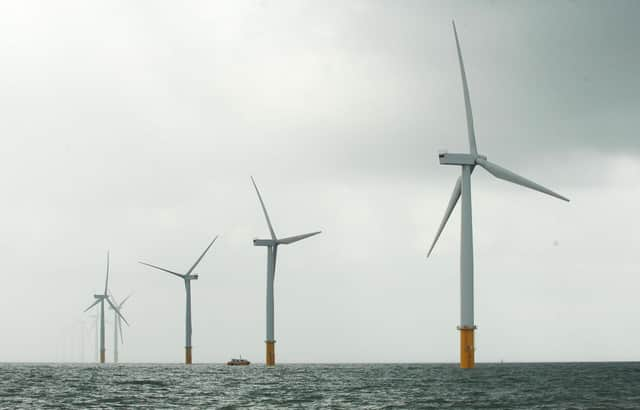Making headway with offshore windfarm sector - comment


Developers have until 31 March 2021 to submit detailed tenders to build offshore windfarms on sites identified as suitable in the Scottish government's Sectoral Marine Plan (SMP) that was published last week.
The long-awaited strategic plan identifies sustainable options for the future development of commercial-scale offshore wind energy in Scotland and outlines the seabed leasing process.
Advertisement
Hide AdAdvertisement
Hide AdThe strategy aims to minimise the potential adverse effects on other marine and economic sectors and the environment, as well as maximising opportunities for economic development, investment and employment in Scotland.


The draft SMP had included 17 proposed option areas for development. However, in the finalised document two option areas have been dropped – SW1, in the Solway Firth, and NE5 in the Moray Firth – while amendments have also been made to the boundaries of seven of the remaining 15 option areas.
Although the number of areas has been reduced, the maximum potential capacity under this leasing round remains 10 gigawatts. The Scottish government said capacity could be more concentrated in the remaining regions due to the removal of two options, adding that this had been accounted for in the SMP’s sustainability appraisal through the use of different capacity scenarios.
The decision to front-load this spatial marine planning exercise and related environmental assessments had caused delays, and some frustration amongst potential developers, but with publication of the SMP the ScotWind bidding can now progress apace.
Now the attention of interested bidders will shift to 15 January 2021, the date that CES is due to publish an addendum outlining changes to the ScotWind programme that will be made as a result of the SMP.
It is expected the addendum will contain more details on the requirements for supply chain commitments. It has been proposed that applicants will have to prepare and submit a “supply chain development statement” that sets out how they plan to engage with and utilise the supply chain to develop their projects. This must include information on the location of supply chain activity and evidence of how the commitments in the plan can be met.
CES will be under pressure from all sides to come up with a workable strategy that makes sense in the context of the ScotWind process and interested parties eagerly await the final shape of those supply chain commitment requirements.
It is fair to say that CES have their work cut out in attempting to balance the interests of politicians who, perhaps understandably, want to promote a home advantage for our indigenous supply chain, while not falling foul of state aid regulations or indeed not be seen to be disadvantaging the economics of projects and the cost efficiencies they must achieve to be viable.
Opportunity
Advertisement
Hide AdAdvertisement
Hide AdIt is worth noting that the SMP, in its final configuration with 15 development areas and the recent boundary adjustments, could provide more opportunity for developers who pioneer deeper water floating wind farm projects, over those who focus on fixed foundation projects.
The strategic plan reinforces the importance of floating wind technology for the future of the sector and this will play well with the global oil and gas operators who are making a concerted effort to transition into the renewable sector.
The first generation of offshore wind farms tended to be situated in locations closer to shore and in more manageable water depths better suited to fixed foundations. Much of this next generation of wind farm projects will be located in deeper waters, which throws up more constraints and issues that need a work-around, and floating technologies can offer one such solution.
Oil and gas operators have a vast bank of knowledge gathered from working for 50 years in the hostile North Sea environment in which they pioneered floating structures and platforms, so they are well placed to make a meaningful contribution to ScotWind projects.
With publication of the SMP and now clarification from CES on the timescale, we should see good progress in 2021 in the route map towards the next generation of the UK’s offshore wind farm projects which is critical to achieving its commitment to a net zero carbon future.
Alan Cook is a partner and renewable energy specialist at Pinsent Masons
A message from the Editor:
Thank you for reading this article. We're more reliant on your support than ever as the shift in consumer habits brought about by Coronavirus impacts our advertisers.
If you haven't already, please consider supporting our trusted, fact-checked journalism by taking out a digital subscription.
Comments
Want to join the conversation? Please or to comment on this article.